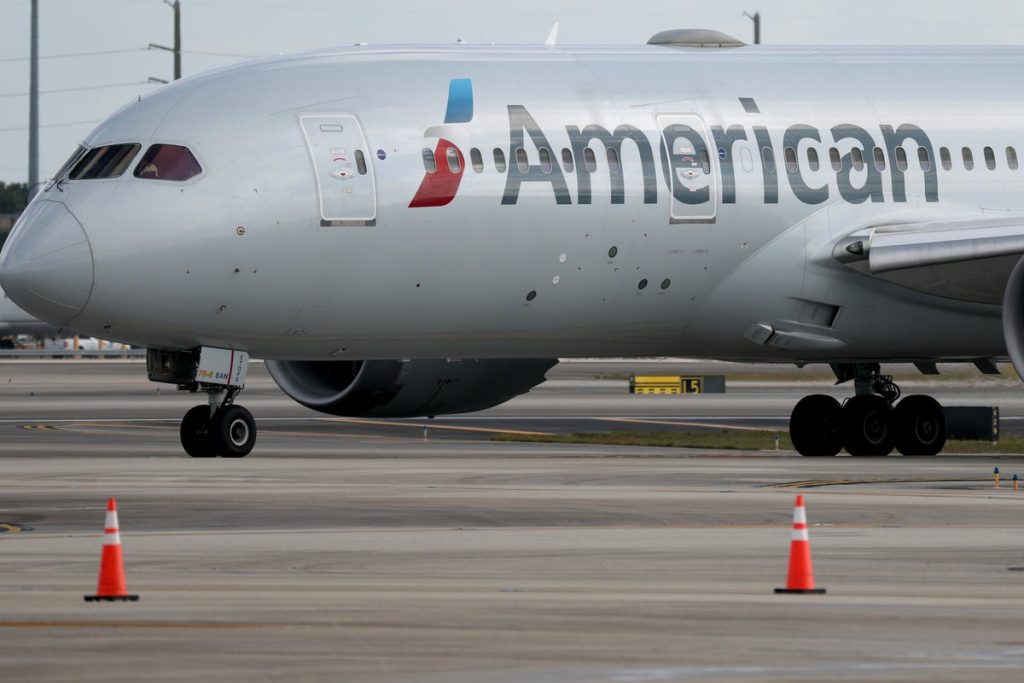Text Message Misinterpretation Forces American Airlines Flight to Return: A Case Study in Overreaction and Security Protocols
An American Airlines flight en route from San Juan, Puerto Rico, to Dallas was unexpectedly grounded just 32 minutes after takeoff on July 3rd. The reason? A fellow passenger, overcome by paranoia, misinterpreted a simple text message received by another traveler. This incident, stemming from a single passenger’s misconstrued observation, serves as a stark reminder of the heightened anxieties surrounding air travel and the complex interplay between passenger vigilance and potential overreaction.
The Snooping Passenger and the “RIP” Text
According to reports in Primera Hora and other news outlets, the incident unfolded when a passenger noticed a fellow traveler receive a text message containing the abbreviation “RIP,” which commonly signifies “Rest In Peace.” Instead of recognizing the potentially innocent context of such a message, the observer jumped to the conclusion that it was a threat to the safety of the flight. The passenger then alerted the cabin crew, triggering a chain of events that ultimately led to the plane’s return to San Juan.
This highlights a significant issue in the current climate: the tendency to interpret ambiguous information in the most negative light, particularly within the context of travel security. While vigilance is undoubtedly crucial in ensuring passenger safety, it’s equally important to avoid knee-jerk reactions based on incomplete or misinterpreted information.
The Flight’s Aborted Journey and Subsequent Investigation
American Airlines flight 1847, originally scheduled for a routine trip between San Juan and Dallas, was immediately directed back to its origin airport following the report. Upon landing, airport security and the Transportation Security Administration (TSA) conducted a thorough inspection of the aircraft. The passenger who raised the alarm was questioned extensively by law enforcement officials, as was the recipient of the “RIP” text.
During the investigation, the passenger who received the text explained the context of the message: a relative had recently passed away, and the text was a response related to their grief and the need to travel to Dallas to support the family. The explanation was deemed credible, and the authorities cleared the flight for re-departure.
This incident underscores the extensive security protocols in place within the airline industry. Even a perceived threat, no matter how tenuous, is taken seriously and thoroughly investigated. While these protocols are essential for passenger safety, they also come at a cost, causing significant delays and inconvenience for all involved.
Flight Delay and Passenger Inconvenience
The unscheduled return and subsequent investigation resulted in a significant delay for the passengers of American Airlines flight 1847. The flight was initially scheduled to depart around 6:10 a.m., but after being cleared, it was rescheduled for 9:40 a.m., a delay of approximately three and a half hours. Passengers were reportedly required to remain on board the plane during the investigation, adding to their discomfort and frustration.
Such delays can have a ripple effect, impacting connecting flights, planned events, and overall travel itineraries. While passenger safety should always be the top priority, it’s also important to consider the significant disruption caused by security measures and the potential for improvement in communication and passenger screening processes.
American Airlines’ Response and Official Statements
American Airlines confirmed the incident to USA TODAY, emphasizing that the plane was cleared to fly once authorities determined there was no genuine threat. Aerostar Airport Holdings, the operator of the San Juan airport, echoed this sentiment. According to the Aerostar Airport Holdings’ operations director, Nelman Nevarez, “It was a mix-up that was handled in accordance with safety protocols. There was no real threat to the flight or its passengers.”
American Airlines issued a statement apologizing to its customers for the inconvenience, reiterating that safety and security remain the airline’s top priorities. These statements highlight the importance of transparency and open communication in managing such incidents, reassuring passengers that their safety is paramount while acknowledging the resulting disruption.
Analysis: A Delicate Balance Between Vigilance and Overreaction
The American Airlines flight incident presents a compelling case study in the delicate balance between vigilance and overreaction in the context of air travel. While the passenger who reported the text message might have acted with good intentions, their misinterpretation and subsequent alarm triggered a series of events that significantly disrupted the travel plans of numerous individuals.
Factors Contributing to the Overreaction:
- Heightened Security Awareness: The post-9/11 era has fostered a climate of heightened security awareness in air travel. Passengers are encouraged to be vigilant and report any suspicious behavior or potential threats. While this vigilance is crucial, it can also lead to overreactions based on incomplete or misinterpreted information.
- Anxiety and Stress of Travel: Air travel can be inherently stressful, with long lines, crowded terminals, and potential delays. This stress can amplify anxieties and lead to a heightened sense of alert, making passengers more likely to interpret ambiguous situations in a negative light.
- Lack of Context and Communication: The passenger who saw the “RIP” text lacked the context to understand its true meaning. This lack of information, combined with a potential predisposition to see danger, led to the misinterpretation and subsequent alarm.
Potential Solutions and Preventative Measures:
- Enhanced Communication and Education: Airlines and airport authorities could implement enhanced communication strategies to educate passengers about potential misinterpretations and encourage them to seek clarification before reporting potential threats. This could involve providing clear guidelines on what constitutes suspicious behavior and emphasizing the importance of considering context.
- Improved Screening and Vetting Processes: While security screening is already rigorous, there might be room for improvement in identifying individuals who might be prone to overreaction or anxiety-driven behavior. This could involve incorporating psychological assessments into the screening process or providing additional training to security personnel on how to manage potentially overreactive passengers.
- Emphasis on Context and Critical Thinking: Security personnel should be trained to consider context and exercise critical thinking when assessing potential threats. This involves avoiding knee-jerk reactions and seeking additional information before taking drastic measures.
- Promoting a Culture of Calm and Rationality: Airlines and airport authorities can play a role in promoting a culture of calm and rationality in air travel. This could involve providing passengers with stress-reduction tips, promoting mindfulness practices, and fostering a more relaxed and supportive environment.
Objective Opinion
The American Airlines incident serves as a crucial reminder that while vigilance is paramount in ensuring air travel safety, it’s equally important to avoid overreactions based on misinterpretations and anxieties. The incident highlights the need for enhanced communication, improved screening processes, and a greater emphasis on context and critical thinking in security protocols.
Moreover, the incident underscores the importance of fostering a culture of calm and rationality in air travel, where passengers feel empowered to report genuine threats without being driven by unnecessary paranoia. By striking the right balance between vigilance and rationality, the airline industry can ensure the safety and security of passengers while minimizing the disruption and inconvenience caused by overreactions.





